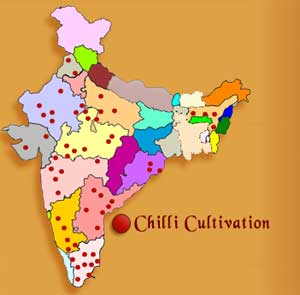CHILLI
Introduction
Chilli is the dehydrated seasoned fruit of the genus Capsicum. Capsicum annuum is a once a year sub -shrub, the flowers of which are borne singly and fruits habitually pendent, which supply red peppers, cayenne, paprika and chillies and sweet pepper a gentle form with large puffed up fruits. Capsicum frutescence is a persistent chilly with miniature sized pods which are highly pungent. In the society and cooking of the Southwest, chili is solemn business. But contrary to what many believe, good chili doesn't require meat. Common Names

Different Varieties in India
- BIRDS EYE CHILLI (DHANI) is grown in Mizoram and some areas of Manipur. It is blood red in color, has a highly pungent smell. It's harvesting season is October to December. It is available in Calcutta market . ASTA color value-41.7, Capsaicine-0. 589%.
- BYADAGI (KADDI) is grown in Dharwar Karnataka. It is red in color with less pungency or without a pungency. It's harvesting season is January to May. The annual production is 21, 000 tonnes. It is available in Hubli-Dharwad markets. ASTA color value-159.9, Capsaicine-Negligible.
- ELLACHIPUR SANNAM-S4 TYPE is grown in the Amaravathi District of Maharashtra. It is reddish in color and is very hot. The annual production is 1800 tonnes. It's harvest season is September to December. It is available in Mumbai, Delhi, Ahemedabad and Nagpur. ASTA color value - 70.40, Capsaicine-0. 2%.
- GUNTUR SANNAM-S4 TYPE is grown in Guntur, Warangal, Khammam Districts of Andhra Pradesh. It's skin is thick, hot and red. It's harvest season is December to May. Its annual production is 2,80,000 tonnes. It is available in Guntur market. ASTA color value- 32.11, Capsaicine-0. 226%.
- HINDPUR-S7 is grown in Hindpur in Andhra Pradesh. It is red in color, hot and has a highly pungent smell. It's harvest season is December to March. It is available in Hindpur. Capsaicine-0.24, ASTA color value- 33.00.
- JWALA is grown in Kheda, Mehsana and in South Gujarat. It has a highly pungent smell, is light red in color, short and the seeds are compact. It's harvest season is September to December. It is available in Unjha market. Capsaicine-0. 4% .
- KANTHARI-WHITE is grown in Kerala and some parts of Tamil Nadu. It is short and ivory white in color with high pungency. It is mainly grown as a homestead crop. It is available in the markets throughout the year. ASTA color value- 2.96, Capsaicine-0. 504%.
- KASHMIR CHILLI is grown in temperate regions such as Himachal Pradesh, Jammu and Kashmir and also in sub-tropical regions of North India during the winter season. It is long, fleshy, deep red in color. Its harvesting season is November to February. It is available in major markets of North India. ASTA color value- 54.10, Capsaicine-0. 325%.
- MADHYA PRADESH G.T.SANNAM is grown in Indore, Malkapur Chikli and Elachpur areas of Madhya Pradesh. It is red in color and has a pungent smell. Its harvesting season is January to March. The annual production is 7500 tonnes. It is available in major markets of Madhya Pradesh.
History
Chilly is reported to be an inhabitant of South America and is widely scattered in all tropical and subtropical countries including India. It was first introduced in India by the Portuguese towards the closing stages of the 15th Century. Now it is grown all over the world except in colder parts. Chili peppers have been a piece of the human diet in the Americas since at least 7500 BC. There is archaeological proof at sites situated in southwestern Ecuador that chili peppers were cultivated more than 6000 years ago and is one of the first cultivated crops in the Central and South Americas that is self-pollinating.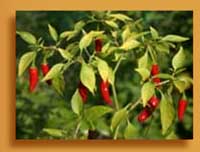
The spread of chilli peppers to Asia was mainly a natural result of its introduction of the Portuguese traders who were aware of its trade value and have likely promoted its commerce in the Asian spice trade routes which was dominated by the Portuguese and Arab traders. There is a demonstrable relationship between the chili pepper environmental distribution and consumption in Asia and the presence of Portuguese traders, India and Southeast Asia being obvious examples. The chilli pepper is engaged deeply in the cuisine of the Goan region of India, which was the site of a Portuguese colony. Chilli peppers travelled from India, through Central Asia and Turkey, to Hungary, where it became the nationwide spice in the form of Paprika. An alternate, although not so plausible account, defended mostly by Spanish historians was that from Mexico, chilli peppers spread into their other colony the Philippines and from there to India, China, Indonesia, Korea and Japan.
Uses
Chilli is used in the field of cooking and medicine. But chilli is also used as an irritant weapon and as a defense for crop and food.
Cooking
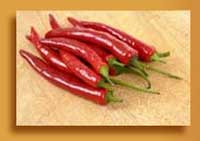
Chilli is by far the most significant fruit in Bhutan. Local markets are not at all without chilli and are always teamed with diverse colors and sizes, in fresh and dried form. Bhutanese fondly call this crop as ema in Dzongkha or solo in Sharchop. Chilli is a staple fruit in Bhutan; the ema datsi recipe is entirely made of chili mixed with local cheese. Chilli is also an significant element in almost all curries and food recipes in the country. In India, most households always keep a load of fresh hot green chilies at hand, and use them to flavor the majority of the curries and dry dishes. It is characteristically lightly fried with oil in the initial stages of preparation of the dish. Some states in India, such as Rajasthan, make whole dishes only by using spices and chilies. Chilies are in attendance in many cuisines.
Medicine
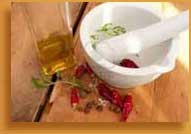
Psychologically eating chilis is an illustration of a "constrained risk" like riding a roller-coaster, in which tremendous feelings like pain and fear can be enjoyed because folks know that these feelings are not actually injurious. This technique lets people acknowledge tremendous feelings without any risk of bodily damage. Capsaicin is a safe and resourceful topical analgesic agent in the management of arthritis pain, herpes zoster-related pain, diabetic neuropathy, post mastectomy pain, and headaches. Farmers in Africa and South Asia have found the exercise with chillis that is useful in crop defense against elephants. The chillis are spread on fences and other constructions to keep the elephants away. Because the elephants have a big and responsive olfactory and nasal system, the smell of the chilli causes them uneasiness and deters them from feeding on the crops. This can diminish dangerous physical confrontation between people and elephants. As birds have a tapering sensitivity to the effects of chilli it can be used to keep mammalian vermin from bird seed.
Chillies comprise home remedies for skin and hair troubles too.
Nutritional Value
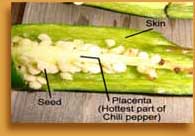
Chilli Cultivation in India
